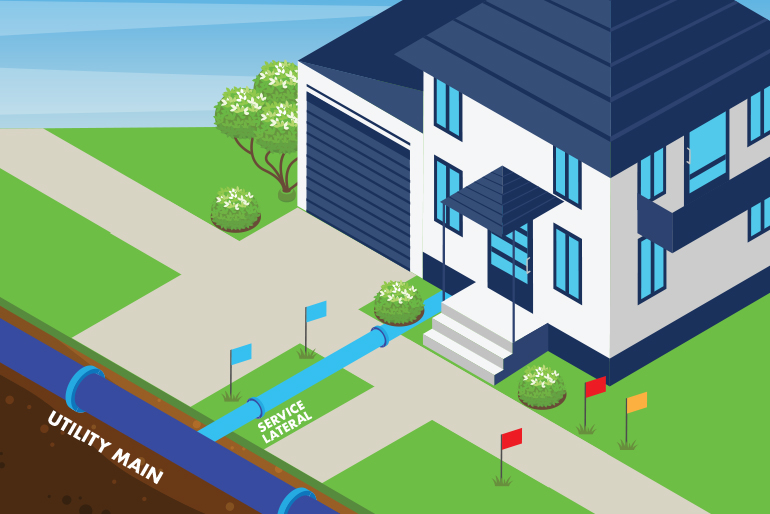Home » Contractor Service Laterals
Starting January 1, 2026, an Illinois law goes into effect requiring any existing service lateral that is completely replaced or any newly installed lateral to be made locatable by electromagnetic or other equally effective means for marking the location of the service lateral.

A service lateral is the section of a service line that connects the mainline facility in the public right-of-way or utility easement to an individual customer or end user—whether that be a residential, commercial or industrial property. While the utility company owns and operates the mainline facility, the property owner is often responsible for the service lateral, which connects the mainline facility to the end user’s building or facility beyond the meter point or shut-off valve if one exists.
Take a city sewer system as an example. The municipality owns, operates and maintains the sewer mains and all the manholes connected to the sewer main, whether they are positioned in the middle of the road, right-of-way or utility easement. Some municipalities own the main and the tee connection, some the right-of-way line, and some to the edge of the improved surface; but the laterals that run from that end point to a building wall are predominantly private lines. For properties with city water, as another example, service lines from the water main to the water meter or B-box are usually installed, owned and operated by the city. The line from the water meter or B-box to the house are installed by a plumbing contractor and privately owned.
Service laterals are most commonly associated with water, wastewater, storm drains, and rural electric co-ops; however, laterals may also deliver gas, electricity and communication services from the utility facility to the end user.
Historically, little or no documentation has been available regarding the location of private lines and service laterals. And many existing laterals, those made of PVC, polyethylene or rolled black plastic, clay, or orangeburg cannot be found with electromagnetic pipe and cable locating equipment. As a result, an excavator today faces an increased risk of inadvertently striking and damaging a service line within the public right-of-way or utility easement. This can slow down operations and add repair costs to a project as well as cause personal injury.
If you’re planning a project that requires you to install or completely replace a service lateral, you are required to make the line locatable. A number of methods are available for doing so.
Service laterals vary greatly between operators, so always confirm local ownership and responsibility rules before starting work.
Copperhead Industries—a leading manufacturer of locate wires, drive-in magnesium ground rods.
Now is the time to prepare for this new Illinois law that requires making service laterals locatable during new installation or complete replacement. That way, by the start of the new year, you’ll not only comply with the law but also help protect workers, prevent costly damages, and keep projects on schedule.
3M—a leading manufacturer of Underground Utility and Pathway Marking Systems
Berntsen—a leading manufacturer of Utility Marking Products